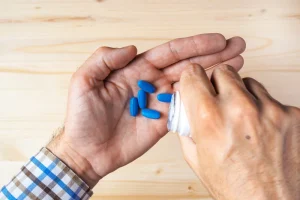
Though drinking alcohol may contribute to facial flushing, there is no definite connection between drinking alcohol and those with end-stage rosacea. At Georgetown Behavioral Hospital, your days will be structured with enjoyable, recovery-based activities. These will include individual and group therapy, in addition to regular, personal meetings with your treatment team to discuss both successes and barrier to recovery. By giving you a regular schedule, our programming helps you establish healthy, constructive routines to improve your ability to function in daily life. At Georgetown Behavioral Hospital, you can take your addiction recovery journey one step at a time. During your time in our inpatient rehab setting, you will learn effective coping strategies to handle life’s daily stressors without using substances.
About Medical News Today
Similar research is needed on the link between alcohol consumption and rosacea in men. Even a single alcoholic drink can cause flare-ups for many people with this condition. A survey by the National Rosacea Society found that red wine was the most common culprit, followed by white wine and beer.
What is An Alcoholic Nose & is it Bad?

In severe cases, without intervention, the nose may appear completely enlarged and disfigured, mostly on the bottom two-thirds and tip. For some people, the condition can spread to the chin or the ear, causing extra tissue growth and disfigurement. Rhinophyma develops over many years, making the nose appear tuberous or bulbous with red discoloration. The vessels on the nose enlarge, cysts and pustules may erupt, making the skin extra oily, and the tissues on the end of the nose appear as if they expand. Though rosacea is more common in women, end-stage rosacea with rhinophyma is more common in men.
What Is Alcoholic Nose? Rhinophyma Causes & Symptoms

Rhinophyma is characterized by a distinctive enlargement and reddening of the nose, with a bumpy, bulbous appearance. These symptoms are indicative of the condition and can be visually observed without the need for laboratory tests. Understanding these non-alcoholic causes is vital for accurate diagnosis and effective treatment. This alcoholic nose may include medication or surgery to manage symptoms and improve the nose’s appearance. Although the condition worsens with excessive alcohol use, an alcoholic nose is not a sign of addiction or a drinking problem.

- When you call our team, you will speak to a Recovery Advocate who will answer any questions and perform a pre-assessment to determine your eligibility for treatment.
- In severe cases, without intervention, the nose may appear completely enlarged and disfigured, mostly on the bottom two-thirds and tip.
- Therefore, when severe rosacea spreads to the nose, it is termed rhinophyma (literally meaning “nose swelling”).
A “drinker’s nose” is actually a condition called rhinophyma, a side effect of rosacea. Usually, rhinophyma involves reddening of the nose and a noticeably bulbous nose, which means that the nose becomes enlarged, more pronounced, and rounder. Nonetheless, excessive alcohol intake has been linked to an increase in the severity of symptoms for those with rosacea.

The most common side effect of rosacea in people who drink is flushed skin. With time, rosacea can worsen, and for people who drink alcohol heavily, this can mean developing rhinophyma. Alcohol use disorder and skin conditions like rosacea are connected because of the potential for alcohol to worsen existing skin conditions. This is a skin disorder called rhinophyma, which is a side effect of another type of skin condition called rosacea.
If you are curious about the options that are available to you, you should consult your primary care physician and see what kinds of treatments they recommend. Rosacea is a skin condition that affects plenty of people each year. When a person has rosacea, their skin—especially on the face— will appear red and create visible blood vessels in the face.
Finding Treatment and Healing From Alcoholism

We believe in you and encourage and support you during addiction treatment. Those who struggle with rhinophyma might feel awkward seeking medical treatment and worry about others incorrectly labeling them as alcoholics or assuming they have a drinking problem. While the clinical presentation of rhinophyma is often distinct, a biopsy can confirm the diagnosis by revealing the characteristic hypertrophy of sebaceous glands and connective tissue. Moreover, it can rule out malignancies, ensuring an accurate diagnosis and appropriate treatment plan. A biopsy involves removing a small tissue sample from the affected area for microscopic examination. This minimally invasive procedure helps differentiate rhinophyma from other conditions that may present with similar symptoms, such as skin cancer or lupus.
- Once acne rosacea progresses to rhinophyma, the skin covering the nose increases in size and the tip of the nose expands.
- Drinking alcohol can wreak havoc on the vascular system as the brain fails to regulate its functions.
- Some people with rosacea develop rhinophyma, but people without rosacea can have this disorder, too.
- These symptoms are likely to occur on the bridge of the nose and the cheeks.
- Alcohol addiction can lead to neglect of nutrition and hygiene and may lead to weight loss.
- Treatment options for rhinophyma typically involve medical therapies and surgical interventions.
The condition is much more common in males than females and usually develops between the ages of 50–70. Heavy consumption of alcohol was considered to be the cause of rhinophyma for many years. Drinking alcohol can wreak havoc on the vascular system as the brain fails to regulate its functions. Once rhinophyma becomes severe, there are visible and obvious changes https://ecosoberhouse.com/article/how-addictive-is-oxycontin/ to the shape, skin and size of the nose.
General Health
That means it’s even more important than usual to make sure you’re getting treatment and have extra help and support while dealing with the addiction. There are many ways to get help if you’re dealing with an addiction like alcoholism. Getting treatment might be even more important if you’re dealing with an Alcoholic’s nose or if you’ve gotten treatment for the condition in the past and had the condition come back. Relying on alcohol can be a serious sign of addiction and that more underlying problems may further complicate your condition.
